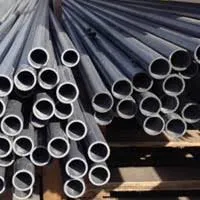
-
 Afrikaans
Afrikaans -
 Albanian
Albanian -
 Amharic
Amharic -
 Arabic
Arabic -
 Armenian
Armenian -
 Azerbaijani
Azerbaijani -
 Basque
Basque -
 Belarusian
Belarusian -
 Bengali
Bengali -
 Bosnian
Bosnian -
 Bulgarian
Bulgarian -
 Catalan
Catalan -
 Cebuano
Cebuano -
 China
China -
 China (Taiwan)
China (Taiwan) -
 Corsican
Corsican -
 Croatian
Croatian -
 Czech
Czech -
 Danish
Danish -
 Dutch
Dutch -
 English
English -
 Esperanto
Esperanto -
 Estonian
Estonian -
 Finnish
Finnish -
 French
French -
 Frisian
Frisian -
 Galician
Galician -
 Georgian
Georgian -
 German
German -
 Greek
Greek -
 Gujarati
Gujarati -
 Haitian Creole
Haitian Creole -
 hausa
hausa -
 hawaiian
hawaiian -
 Hebrew
Hebrew -
 Hindi
Hindi -
 Miao
Miao -
 Hungarian
Hungarian -
 Icelandic
Icelandic -
 igbo
igbo -
 Indonesian
Indonesian -
 irish
irish -
 Italian
Italian -
 Japanese
Japanese -
 Javanese
Javanese -
 Kannada
Kannada -
 kazakh
kazakh -
 Khmer
Khmer -
 Rwandese
Rwandese -
 Korean
Korean -
 Kurdish
Kurdish -
 Kyrgyz
Kyrgyz -
 Lao
Lao -
 Latin
Latin -
 Latvian
Latvian -
 Lithuanian
Lithuanian -
 Luxembourgish
Luxembourgish -
 Macedonian
Macedonian -
 Malgashi
Malgashi -
 Malay
Malay -
 Malayalam
Malayalam -
 Maltese
Maltese -
 Maori
Maori -
 Marathi
Marathi -
 Mongolian
Mongolian -
 Myanmar
Myanmar -
 Nepali
Nepali -
 Norwegian
Norwegian -
 Norwegian
Norwegian -
 Occitan
Occitan -
 Pashto
Pashto -
 Persian
Persian -
 Polish
Polish -
 Portuguese
Portuguese -
 Punjabi
Punjabi -
 Romanian
Romanian -
 Russian
Russian -
 Samoan
Samoan -
 Scottish Gaelic
Scottish Gaelic -
 Serbian
Serbian -
 Sesotho
Sesotho -
 Shona
Shona -
 Sindhi
Sindhi -
 Sinhala
Sinhala -
 Slovak
Slovak -
 Slovenian
Slovenian -
 Somali
Somali -
 Spanish
Spanish -
 Sundanese
Sundanese -
 Swahili
Swahili -
 Swedish
Swedish -
 Tagalog
Tagalog -
 Tajik
Tajik -
 Tamil
Tamil -
 Tatar
Tatar -
 Telugu
Telugu -
 Thai
Thai -
 Turkish
Turkish -
 Turkmen
Turkmen -
 Ukrainian
Ukrainian -
 Urdu
Urdu -
 Uighur
Uighur -
 Uzbek
Uzbek -
 Vietnamese
Vietnamese -
 Welsh
Welsh -
 Bantu
Bantu -
 Yiddish
Yiddish -
 Yoruba
Yoruba -
 Zulu
Zulu
Designing Innovative Handrails for Enhanced Safety and Aesthetics in Modern Spaces
The Importance of GRP Handrails in Modern Construction
In recent years, the construction and manufacturing industries have increasingly focused on safety, durability, and sustainability. One significant advancement in this direction is the use of Glass Reinforced Plastic (GRP) handrails. These innovative handrails are not only a functional safety feature but also offer aesthetic appeal and versatility for a wide range of applications.
Understanding GRP Handrails
GRP, or Glass Reinforced Plastic, is a composite material made of a polymer matrix reinforced with glass fibers. This combination results in a material that is both lightweight and incredibly strong. GRP handrails are designed to provide safety and support in various environments, from commercial buildings and public spaces to industrial sites and residential properties. Their design can vary from simple models to more intricate styles, allowing architects and builders to tailor them to the specific requirements of their projects.
Advantages of GRP Handrails
One of the most significant advantages of GRP handrails is their resistance to corrosion and environmental degradation. Unlike traditional materials like wood or metal, which can rust, rot, or deteriorate over time due to exposure to the elements, GRP is exceptionally durable. This makes them particularly suitable for outdoor applications, such as docks, bridges, and walkways, where they are exposed to moisture and varying weather conditions.
Moreover, GRP handrails are low-maintenance. Unlike wood, which needs regular painting, staining, or sealing, or metal, which may require rust treatment, GRP handrails are easy to clean and maintain. A simple wash with water and mild soap is often sufficient to keep them looking new. This aspect not only saves time and money in upkeep but also contributes to the sustainability of the materials used in construction.
grp handrail

Safety Features
Safety is paramount in any construction project, and GRP handrails excel in this regard. They are designed to meet stringent safety standards, making them suitable for both public and private facilities. GRP handrails have a high slip resistance, reducing the risk of accidents caused by slipping, especially in wet conditions. Additionally, their strength can withstand considerable pressure, making them reliable support structures.
GRP handrails are also customizable. They can be manufactured in various colors, shapes, and sizes to meet aesthetic requirements and specific safety needs. This customization allows architects to integrate them seamlessly into their designs without compromising on safety. In public spaces, this adaptability aids in maintaining an attractive environment while ensuring that safety protocols are adhered to.
Environmental Considerations
As society becomes more aware of environmental issues, the choice of materials in construction has come under scrutiny. GRP is often regarded as an environmentally friendly option because it can be made from recycled materials and is fully recyclable itself, reducing waste in landfills. Furthermore, the production of GRP requires less energy compared to traditional materials, making it a more sustainable choice for eco-conscious builders.
Conclusion
In conclusion, GRP handrails represent a significant innovation in the realm of construction safety solutions. Their combination of strength, durability, low maintenance, safety features, and environmental benefits makes them an excellent choice for various projects. As more architects and builders recognize the advantages of using GRP materials, it is likely that we will see a growing trend toward their implementation in modern construction. Embracing GRP handrails not only enhances safety and functionality but also contributes to a more sustainable future in building design. Whether for commercial, public, or residential use, GRP handrails are set to become a standard in contemporary architecture, ensuring safety and style go hand in hand.









